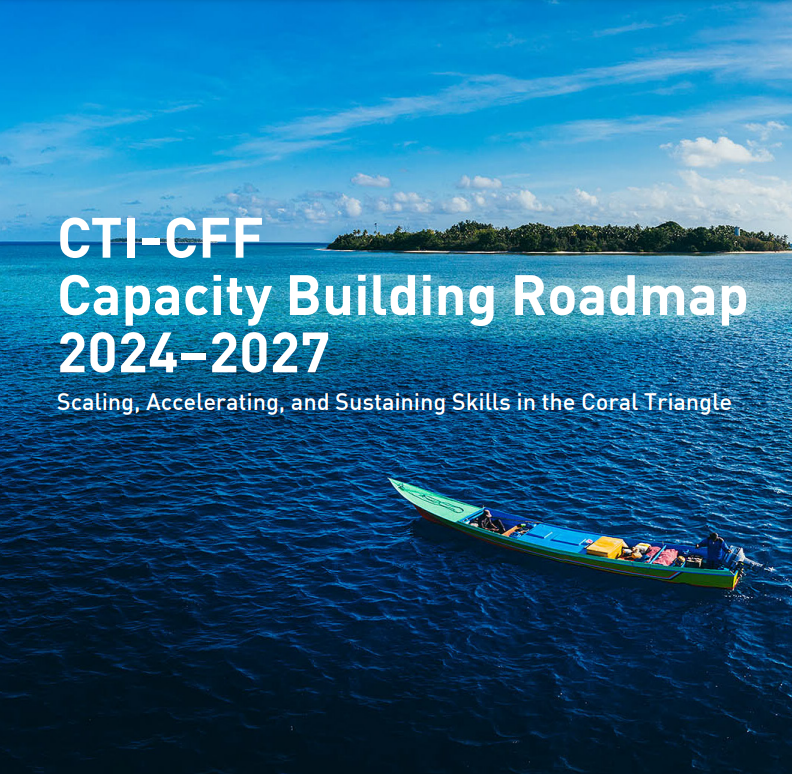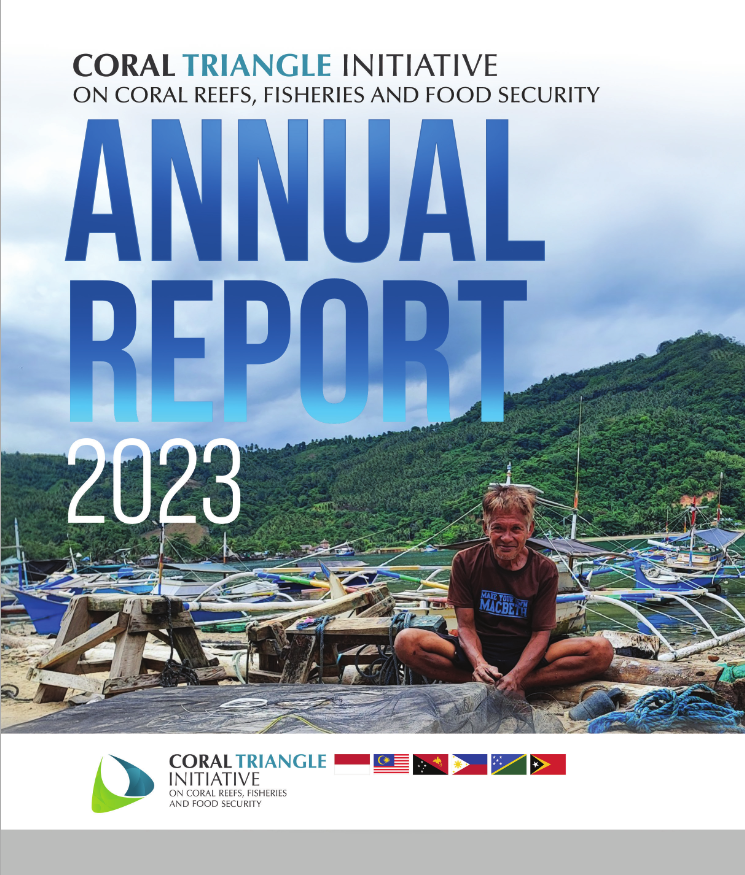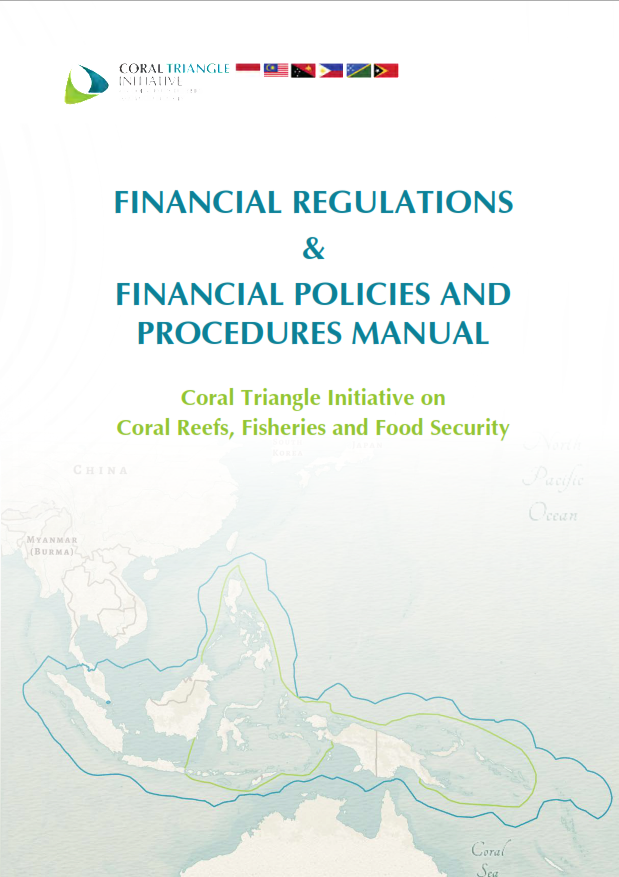Sustaining the "Amazon of the Seas"
It happens every day all across the country. People swing by the local grocery store to pick up some tuna fillets or frozen scallops for a quick and tasty seafood dinner. Chances are that tuna and scallops came from a vast expanse of marine and coral ecosystem in the Asia-Pacific called the Coral Triangle.
This marine treasure, however, is at risk. A report by the World Resources Institute released in 2012 showed that as much as 90 percent of the reefs in the Coral Triangle are threatened by overfishing, population growth, development, pollution and the impacts of climate change. Weak governance and limited law enforcement resources combined with increasing demand for seafood make sustainable management of this underwater ecosystem a huge challenge.
The problems facing the Coral Triangle are also set to negatively impact the 363 million people living inside its boundaries, 130 million of whom are directly dependent on its resources for their livelihoods and food security. Many of them earn a little more than a few dollars a day.
The area is also a major supplier to global markets, sourcing more than 20 percent of the total global fisheries supply, as well as to the United States, which imports a whopping 91 percent of the seafood consumed by Americans every year. Several Coral Triangle countries, like Indonesia and the Philippines, export the majority of shrimp, scallops and clams available on the U.S. market. Indonesia alone contributed about a quarter—or about 13,000 tons—of the fresh and frozen tuna imported by the United States in 2010, a catch valued at $112 million.
The marine scientist who first mapped the Coral Triangle, J.E.N. “Charlie” Veron, maintains that it is the global epicenter for marine life and must be protected. “The degradation of the Coral Triangle is so great that we must hurry to preserve the best of it,” he said in 2009.
Conserving a Way of Life
In 2007, Indonesian President Susilo Bambang Yudhoyono began talking about conserving and sustaining the Coral Triangle, the waters of which link the six countries within its bounds. He invited the leaders of the other five Coral Triangle countries to join him in his campaign and they agreed, launching the Coral Triangle Initiative on Coral Reefs, Fisheries and Food Security (CTI-CFF).
With its strong history of engagement around marine issues, USAID recognized the potential for a regional agreement to strengthen marine resource governance and conservation. Within months, the Department of State, USAID in Washington and its Regional Development Mission for Asia, as well as its missions in the Philippines, Timor-Leste and Indonesia, put in place the multi-part USCTI in September 2008. The initiative brought together the technical expertise and local knowledge of a consortium of NGOs, including the World Wildlife Fund, The Nature Conservancy, and Conservation International—which together make up the Coral Triangle Support Partnership, a key implementer of the project—as well as the scientific expertise of the U.S. National Oceanic and Atmospheric Administration (NOAA), and access to a deep pool of technical experts to work with local organizations and policy makers.
Of the contributions by U.S. scientific experts, a NOAA-supported fish biomass study provided critical information on the health of fish stocks in Timor-Leste’s waters that is informing government decision making.
Timor-Leste Secretary of State for Fisheries and Aquaculture Rafael Gonçalves recently acknowledged the benefits of the study. “Before, we did not know about the state of our reefs, their importance and the level of threats. Now we have an understanding of this in certain areas,” he said.
With USCTI support, the Coral Triangle nations moved quickly. In May 2009, the six nations formally established the Coral Triangle Initiative for Coral Reefs, Fisheries and Food Security (CTI-CFF) by signing a Declaration and Regional Plan of Action. Each member country followed with its own national action plan to coordinate activities and policy within and across national boundaries.
Five years after the official launch of the USCTI, a regional system of ocean governance is in place that is transforming the region. Through U.S. support:
- Nearly 10,000 government, NGO and community representatives from the Coral Triangle have been trained in natural resources management;
- Nearly 20 communities in five countries are managing their local marine resources;
- Nearly 20 million hectares (nearly 76,000 square miles, or almost the size of South Dakota) of biologically significant areas as well as coastal and marine areas are under improved management;
- And 93 policies, regulations, laws and agreements contributing to coastal and marine resource management have been developed.
“This support is contributing towards making the protection and conservation of the biological diversity of a unique region of our planet a reality,” Timor-Leste President Taur Matan Ruak said about the regional effort in July 2013.
Jane Lubchenco, former head of NOAA, has called the Coral Triangle Initiative a “beacon of hope” in sustaining marine resources and “the broadest and deepest engagement in regional ocean governance to date.”
USAID continues to play a role in moving momentum forward by providing ongoing financial and technical support in collaboration with other donors.
The six Coral Triangle nations have started a region-wide effort to protect the food security, well-being and economic potential of the most productive ocean area in the world. The building blocks for achieving long-term results have been laid with achievement of key regional actions, which included the development of regional plans to manage fisheries, the creation of marine protected areas, and an action plan and guide for climate change adaptation.
Communities in all six countries have begun to feel the positive impact the initiative has had in their daily lives, such as the families in the Philippines. The impact will be sustained once the initiative completes institutionalization through establishment of a permanent regional secretariat.
The Tasks Ahead
Over five years, the Coral Triangle countries have worked together to manage their shared, invaluable ocean equities, despite differences in national capacity and resources. The six Coral Triangle countries speak more than 1,000 languages between them and have varying forms of government, economies, development challenges, and marine and coastal resource management issues.
According to Sudirman Saad of Indonesia, chairman of the interim regional secretariat of the Coral Triangle Initiative for Coral Reefs, Fisheries and Food Security (CTI-CFF), regional initiatives are by their nature challenging, and the CTI is no exception. However, he says, “the CTI-CFF has demonstrated that by working and collaborating at the regional, national and community level and involving as many stakeholders in our programs, the initiative has made headways in protecting our marine resources.”
USAID support and partnership with the Coral Triangle nations has opened a new chapter in sustainable management of the most biodiverse and productive ocean region in the world.
Adapated from USAID Frontlines. To read the original article, click here.



